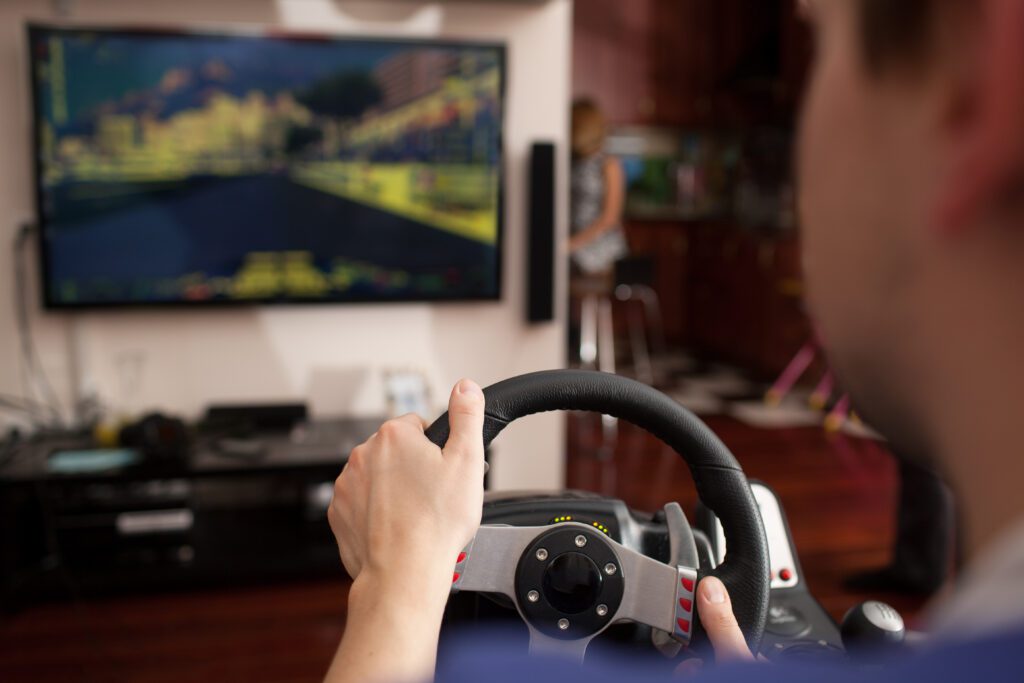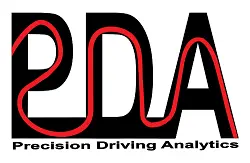How to Effectively Use a Simulator

Bad Habits to Avoid When Using a Driving Simulator
With the winter months upon us now, a lot of racers turn to driving on their simulator to scratch that racing itch. This is great as long as the simulator is used in a manner that helps them and doesn’t enforce bad habits. One phrase that I picked up over this past year was: “A simulator is a great place to practice bad habits.” Here are some of the bad habits that I have seen driver’s reinforce when using a simulator:
1) Thinking that the braking points in the simulator are going to be the same as in real life and that braking points don’t change
2) Improper brake release
3) Improper throttle application
4) Not looking far enough ahead
I think the phrase that I hear the most from drivers who have been driving on a SIM and comparing that experience to real life is that the braking points aren’t the same between the two and this throws them off because now they have to re-learn all the braking points. Instead of focusing on the braking points in the SIM, focus on the learning process. Brake points can change (even if it is only slightly) throughout the race weekend or even during a race. If you can keep the brake application and the brake release the same for a particular corner, then it is much easier for you to figure out where to hit the brakes and when you need to adjust your braking point.
For example, for a slow corner where trail braking is required, you should hit the brakes hard when the car is going the fastest and then slowly release the brake pedal as you approach the apex with the goal of having your foot come off the brake pedal at the apex. If your foot comes off the brake pedal well before the apex then you have over slowed and you can most likely brake later. If the corner feels rushed and you are having to jump off the brake pedal because you got to the corner faster than you thought you would, then they probably need to brake earlier. Also, if you can’t get the car turned in time to make it to the apex, then again, you should probably brake earlier. To get all of this right, it is also important that the you keep your eyes up and look for the apex of the corner as soon as possible.
What is Hobby Horsing?
Many drivers have a bad habit of “hobby horsing” with the throttle and if the driver is doing this in the SIM than they are most likely doing this in real life too. Race cars with stiff suspensions generally don’t like load being transferred quickly and this is what is happening if you are on and off the throttle. For you to fix this habit, first you have to recognize that you are doing it. The great thing about simulators is that data can be gathered just like it can from a real race car. And this is a perfect opportunity for you to look for these bad habits. If you are “hobby horsing” with the throttle, then the first thing to do is find out why it is happening. Are you too aggressive with the throttle application and are you inducing understeer or oversteer or is the car’s setup such that the car has too much understeer or oversteer and you are reacting to it? The bottom line is that either you need to adjust your driving or the car’s setup needs to be changed. Sometimes it is both! But that is one of the best things about simulators – there are plenty of opportunities to try different things without penalty.
Again, looking far out in front of the car is really important. You have much more opportunity to adjust if you see that the car isn’t going where you want it to go or something is happening up ahead that you may need to avoid. Believe it or not, this skill can be practiced in the SIM as well. I have found that it seems easier to fall into the trap of looking right in front of the car in the SIM though. In my opinion, I think that it is easier to practice this skill in the simulator if a Virtual Reality (VR) headset is used. Some people say they can’t use VR because they feel nauseous, but many times the people that are saying this tried to go fast right away and this gave them a bad experience. VR takes some time to get used to and it is better to take it in small chunks of time and not at fast speeds. It is best to keep doing a little more each time with decent breaks between sessions in order to get used to it. I personally can’t effectively drive on a SIM without it now.
The Benefits of Using a Driving Simulator for Racing
There are some other aspects of SIM use that I think can be very beneficial. All of these are the mental aspects of using a SIM that I believe correlate to real life.
1) Focus – learning to maintain focus is one of them. To build up mental stamina, a you should stay on the SIM longer than a normal race distance. If you can keep your mind focused on driving without making mistakes for a longer period than you are used to being in a real car then this will pay dividends.
2) Race Craft – I have always said that the mental aspects of racing in a SIM are the same as racing in real life. Race Craft is something that comes with experience but a lot of that experience can be gained in the SIM as well. Knowing how to size up a competitor, when to make a pass, how to apply pressure on a competitor, how to pull away from a competitor, how to manage tire wear, and much more, are all skills that can be gained in a SIM and can benefit drivers in real life.
3) Going Fast Right Away – many times a driver in real life needs to go fast right away before their tires are up to pressure and temperature. One of the best examples of this is the start of a race. But also, many times qualifying sessions aren’t very long and the driver needs to get that fast lap in quickly. One of the best things to do to practice this is to drive a few laps on the SIM and see if you can equal or beat your previous fastest lap in those few laps. Then take a 10 or 15 minute break and try again. Keep doing this until you can hit that fast lap time.
I have personally learned a lot about data analysis and car setups using simulators. One of the great things about a SIM is that the variables can be controlled much more easily than in real life. This makes the learning process for data analysis and car setup much easier because there aren’t other factors such as the weather confusing things.
Need a Driver Coach for your Racing Simulator?
And don’t forget, you can always use a driver coach as well. One of the services that I offer here at Precision Driving Analytics is to coach while on the simulator. This is especially easy with iRacing. The great thing about this is that your coach can ride with you and give you advice real time, you can ride with the coach, lead/follow exercises can be performed, and the coach can even be in your ear while your racing. Utilizing a coach for some of your SIM sessions especially helps when looking to find and break those bad habits!
Call (948) 257-0556 or click here to contact me today.

